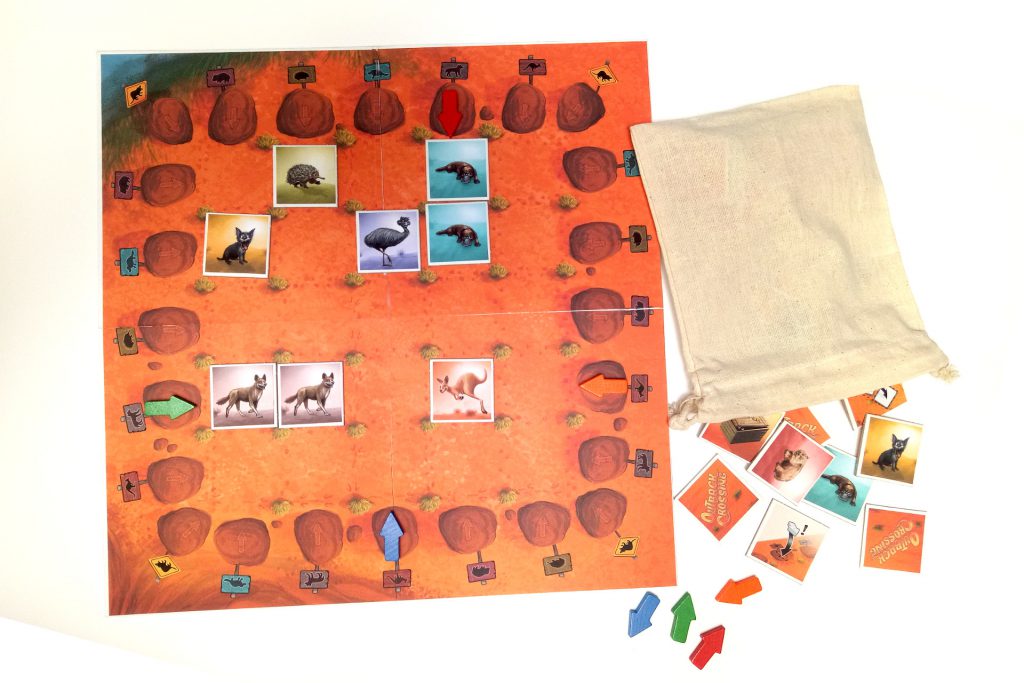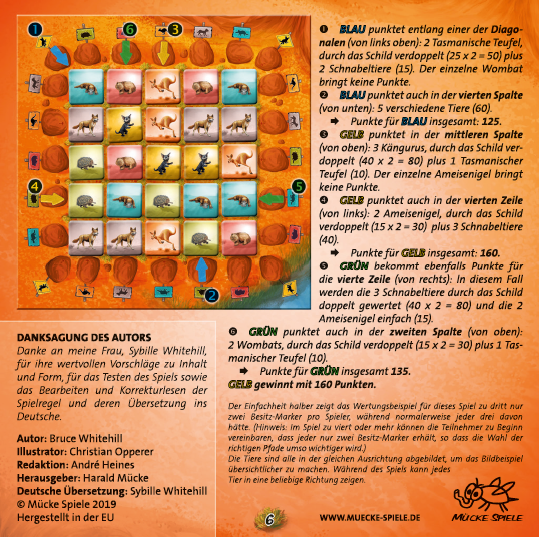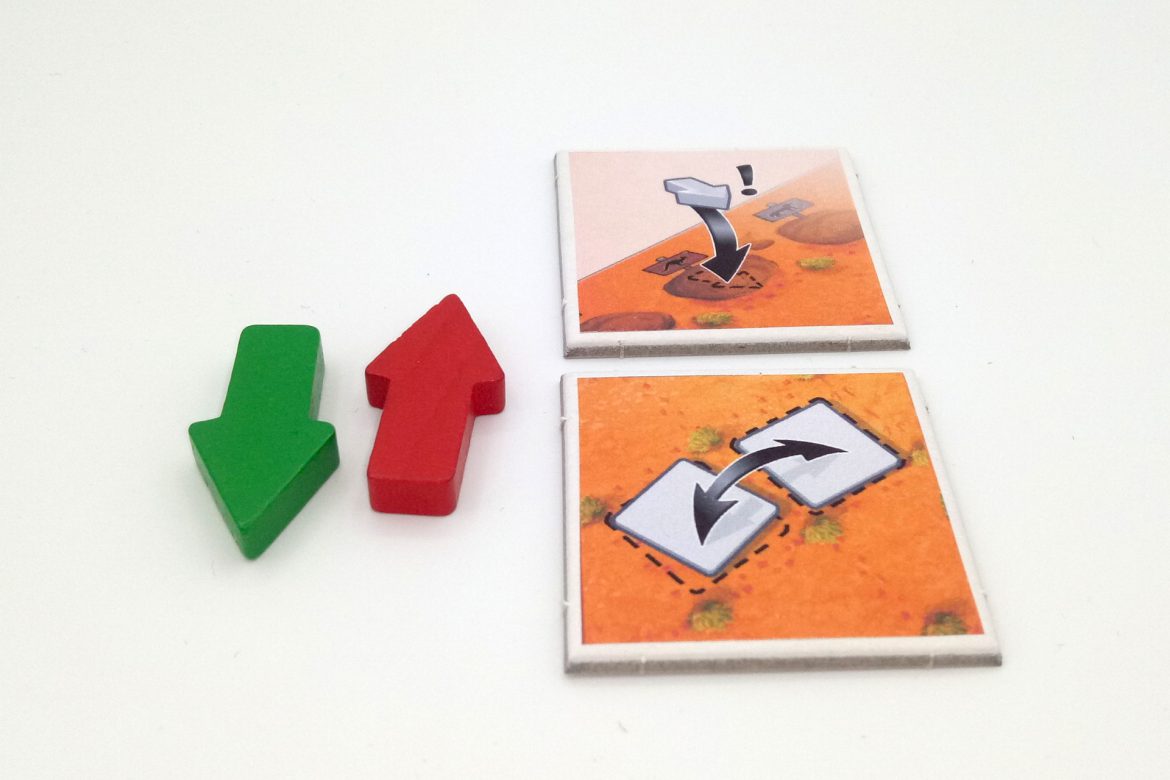Players: 2 – 6
Ages: 8 and up
Playing time: 30 – 40 minutes
Set-up:
- Place the gameboard so it is easily accessible to all players.
- Give each player a Scoring summary card and three Ownership tokens of the same color. Note: In a two-player game, give each player four Ownership tokens.
- “Seed” the board by placing four animal tiles at random anywhere on the board, as long as there are not two tiles in the same row or column or along the same diagonal.
- Shuffle the Animal and Action tiles together and put them face down in a stack next to the board.
- Each player draws one tile, looks at it and keeps it face down in front of him as his “Hold tile,” provided it is an animal tile; if it is an Action tile, place it in the middle of the stack and draw another tile until you get an animal tile.
- The player who has seen a kangaroo last goes first.

How to Play:
On your turn, you can do one of three things:
- Place one of your as yet unused Ownership tokens on the board to claim the rights to a row, column, or diagonal—referred to as “trail”—as explained below; or
- Play your Hold tile if you have one: place it on any empty space. Do not draw a tile! Or,
- Draw a tile from the stack:
- If you draw an Animal tile, place it on an empty space on the gameboard, or, if you have no Hold tile because you have used your previous one, you may put the Animal tile you just drew face down in front of you as your new Hold tile.
Remember: You cannot draw a tile AND then play your Hold tile instead. - If you draw an Action tile, perform the action shown; then discard the Action tile from the game.
Remember: An Action tile cannot be kept as a Hold tile.
- If you draw an Animal tile, place it on an empty space on the gameboard, or, if you have no Hold tile because you have used your previous one, you may put the Animal tile you just drew face down in front of you as your new Hold tile.
Action Tiles:
You must do the action if it is possible; if it is not, remove the tile from the game and draw another.
(The number in parentheses tells you how many there are in the game.)
(Move one of your Ownership tokens to any valid spot; see below.)
Ownership Tokens:
You have three Ownership tokens (four in a two-player game). On your turn, you may place an Ownership token on any unoccupied animal image around the perimeter of the gameboard, provided it doesn’t give you ownership of two ends of the same trail; you are allowed to own the same trail as an opponent, however, by putting your Ownership token on the animal on the opposite end of the trail. When the game ends, the animal that your token is sitting on scores double for that particular animal on that trail.
Note: In a 2-player game, a player may not claim ownership of a trail that his opponent has already claimed.
End of the Game:
The game ends as soon as the gameboard is full.
Scoring and Winning
Players add the points for the animals along the trails they own, according to the scoring below. If a player has not used all his Ownership Tokens by the time the game ends, he scores for only for those trails over which he has ownership. (You should have pencil and paper handy to record the scoring.)
The player with the highest score wins.
Note: The Wild tile can stand for different animals if scored in different directions (but only as one animal per direction).
Scoring per trail:
2 of the same
15 Points
3 of the same
40 Points
5 all different
60 Points (okay to have the Tasmanian Devil as one of them, but it does not score 10 pts. extra)
4 of the same
75 Points
5 of the same
100 Points
Exceptions:
1 Tasmanian Devil
10 Points
2 Tasmanian Devil
25 Points
3 Tasmanian Devil
50 Points
4 Tasmanian Devil
90 Points
5 Tasmanian Devil
125 Points
Note:
If a ownership token is placed on an animal that appears twice or more on the path, (once enough only in the case of the Tasmanian devil), this animal is scored twice! (See Fig. “Rating example”)


